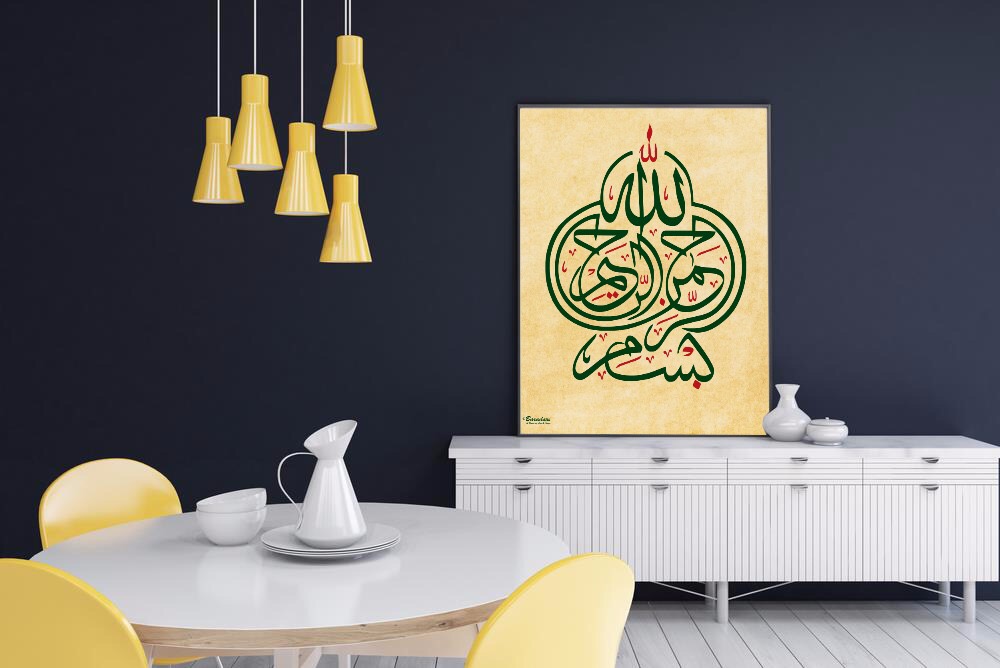Islamic artis a blanket term that includes the whole range of visual arts created after the advent of Islam in the 7th century. These arts were produced by people living in Muslim-majority lands such as the Arab world, Turkey, Spain and Persia, or lands where Muslims were in a minority but formed the ruling class such as medieval India. Islamic art covers a period of over 1400 years and includes a host of fields as varied as calligraphy, painting, glass, pottery, and textile arts such as carpets and embroidery.
Islamic art is not necessarily religious and includes secular items as well such as geometric patterns and floral designs found in palaces, homes, mosques as well as in artefacts and carpets.
1} Calligraphy:
Arabic calligraphy is the most outstanding category of Islamic art. Arabic was the lingua franca in pre-Islamic Arabia, but Arabic calligraphy as a form of art got a lease of life after the advent of Islam. As Islam forbids depiction of human and animal figures, artists took to writing the verses of the Quran in an artistic manner – serving both a religious purpose, and also contributing to the visual arts scene in the Muslim world. The walls and domes of Islamic monuments are filled with Arabic calligraphy.
2} Miniature paintings:
A miniature painting is a small painting on paper meant not for public display but for use in the court, and to be kept in an album called the ‘muraqqa’. Originating in Persia in the 13th century, miniature paintings came into use in Ottomon Turkey and Mughal India too. As the paintings were meant for court use only, religious restrictions on depiction of human and animal figures was often overlooked.
3] Rugs and carpets:
This category, like calligraphy, is also quite prominent. But unlike calligraphy, which is largely religious, carpets and rugs take on secular motifs such as floral designs and borders too. Carpets, besides their artistic value, are also used for practical living, such as covering floors, and being used even to make prayer rungs. Carpet weaving is a widespread tradition in Islamic societies, can be seen in large city factories as well as in rural communities and nomadic encampments.
4} Ceramic pottery:
Ceramic pottery and tiles made up for the absence of wall paintings in the Islamic world. Though the earliest pottery dates to Basra in the 8th century, Chinese influence played a major role following the Mongol invasions in the 13th century. Most of the pottery produced has a lot of blue and green, typical of Persia.
There are several other aspects of Islamic art, worthy of an encyclopaedia, covering glass, silk and metal works produced across regions – form Spain and Morocco to China and Indonesia.
Of late, as people buy online Islamic art, modern innovations such as canvas and leather printing as well as vinyl wall stickers have too made inroads into the overall realm of Islamic arts. It remains to be seen whether these modern innovations would also be written down in the glorious history of Islamic art.
